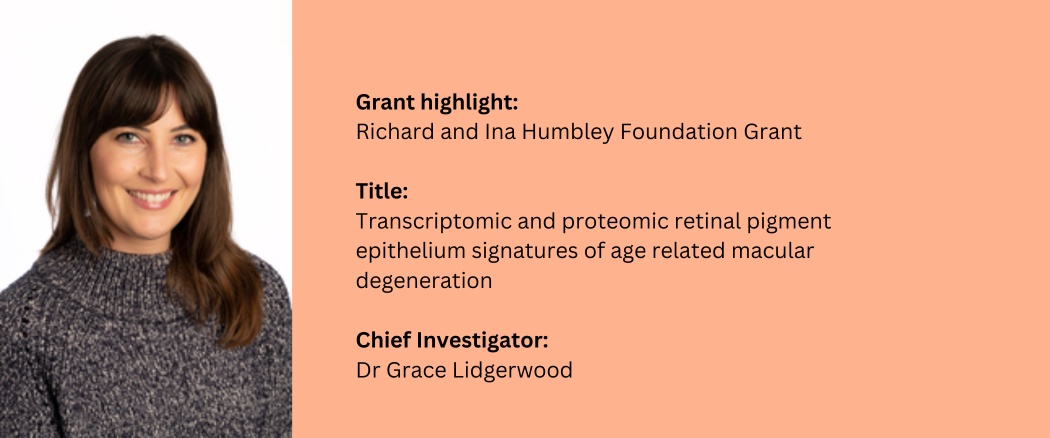Title: Transcriptomic and proteomic retinal pigment epithelium signatures of age related macular degeneration
Chief Investigator: Dr Grace Lidgerwood
Co-investigators: Dr Mehdi Mirzaei, Prof Alex Hewitt, Prof Alice Pébay
Aim
To establish the proteomic profile of RPE cells from a large study of age-related macular degeneration geographic atrophy (GA) patients and healthy controls to identify molecular differences associated with the disease.
Methods
Fibroblasts from 79 individuals (43 geographic atrophy and 36 controls) were reprogrammed into iPSCs and differentiated to mature and functional retinal pigment epithelium (RPE) cells, the tissue that is affected in GA. All samples were harvested after 90-days, and the proteome was determined using liquid chromatography mass spectrophotometry (LC-ESI-MS/MS) and computational analysis.
Key Results
The study found that 234 proteins were significantly differentially expressed between geographic atrophy and control RPE. The GA dataset was highly enriched in pathways associated with mitochondrial and metabolite functions (including lipid synthesis, gluconeogenesis, cholesterol, and glucose metabolism).
Conclusion
The results suggest changes to metabolic homeostasis is a feature of GA.
Implications for Clinical Practice/Science and Future Research
The study identified mitochondrial-associated pathways as significantly altered in disease, and this may lead to therapeutic discovery in future follow-up research. We are currently examining mitochondrial function in GA- affected RPE cells. Optimisation of assays that measure functional changes in the mitochondria is underway, and approaches to mimic the disease features in vitro by incorporating aspects of stress and biological aging are being explored.
Lay summary of outcomes
Our study explored how complex molecules (proteins) differ between late-AMD and healthy individuals. Analysing stem cell derived retinal cells from 79 patients, we identified 234 proteins associated with disease. A significant proportion were associated with energy metabolism, suggesting it is a key feature of the disease.
About the Chief Investigator
Dr Grace Lidgerwood is a Research Fellow in CERA’s Clinical Genetics team. She has strong experience in human pluripotent stem cell (hPSC) research and tissue engineering, molecular and cellular biology, immunofluorescence, flow cytometry, ELISA and a range of metabolic assays. Dr Lidgerwood is an affiliate Postdoctoral Fellow for the ARC Centre for Personalised Therapeutic Technologies (ARC CPTT), an Honorary Fellow of the Department of Surgery, and the Chair of the Early Career Researcher Committee, Australian Society for Stem Cell Research (ASSCR).

